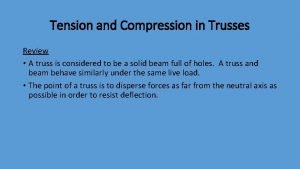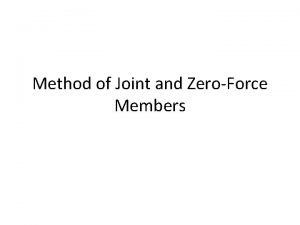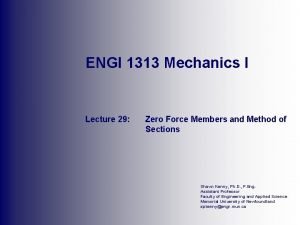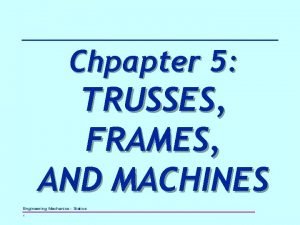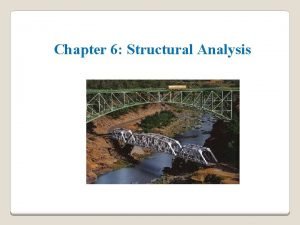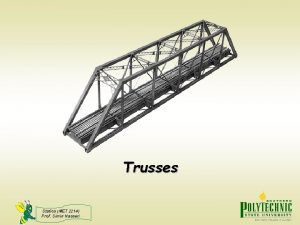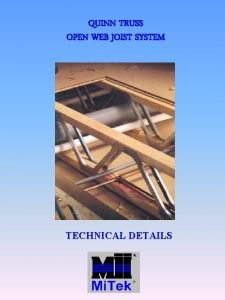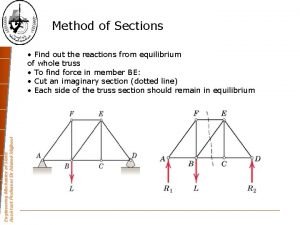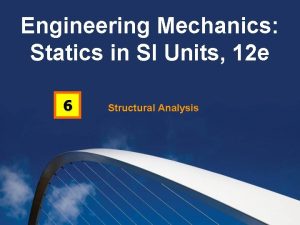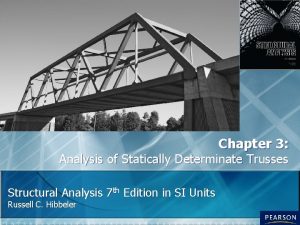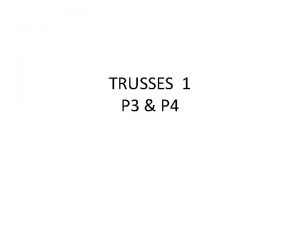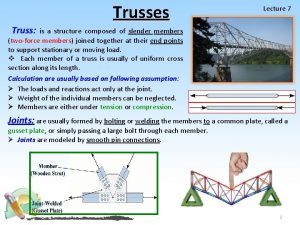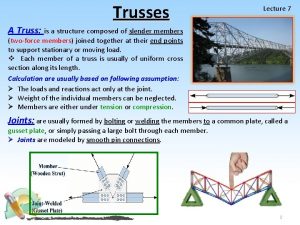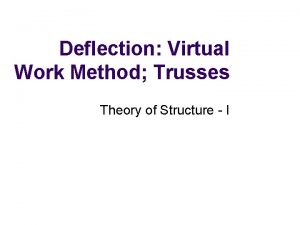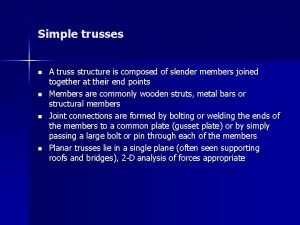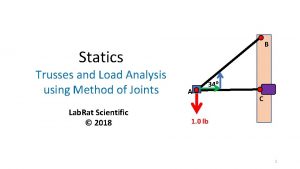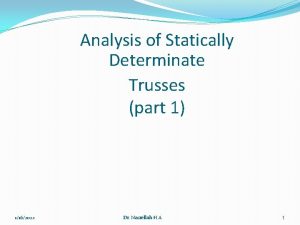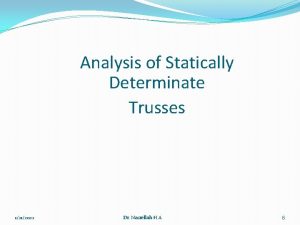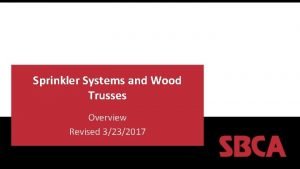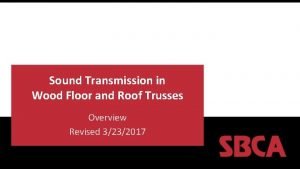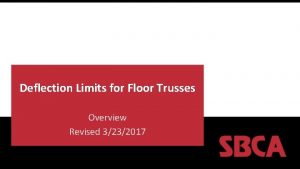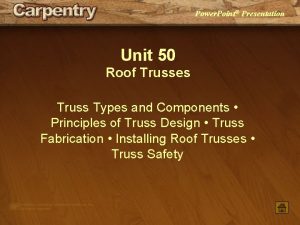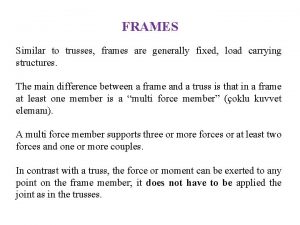Structure Analysis I Lecture 5 Trusses Trusses in


























- Slides: 26

Structure Analysis I

Lecture 5 Trusses

Trusses in Building

Trusses Types for Building



Truss Bridge

Truss Bridge Types


Classification of coplanar Truss Simple Truss

Compound Truss

Complex Truss

Determinacy For plane truss If b+r = 2 j If b+r > 2 j statically determinate statically indeterminate Where b = number of bars r = number of external support reaction j = number of joints

Stability For plane truss If b+r < 2 j unstable The truss can be statically determinate or indeterminate (b+r >=2 j) but unstable in the following cases: External Stability: truss is externally unstable if all of its reactions are concurrent or parallel

Internal stability: Internally stable Internally unstable

Classify each of the truss as stable , unstable, statically determinate or indeterminate.


The Method of Joints STEPS FOR ANALYSIS 1. If the support reactions are not given, draw a FBD of the entire truss and determine all the support reactions using the equations of equilibrium. 2. Draw the free-body diagram of a joint with one or two unknowns. Assume that all unknown member forces act in tension (pulling the pin) unless you can determine by inspection that the forces are compression loads. 3. Apply the scalar equations of equilibrium, FX = 0 and FY = 0, to determine the unknown(s). If the answer is positive, then the assumed direction (tension) is correct, otherwise it is in the opposite direction (compression). 4. Repeat steps 2 and 3 at each joint in succession until all the required forces are determined.

The Method of Joints

Example 1 Solve the following truss



Group Work Determine the force in each member

Zero Force Member 1 - If a joint has only two non-colinear members and there is no external load or support reaction at that joint, then those two members are zero-force members

Zero Force Member 2 - If three members form a truss joint for which two of the members are collinear and there is no external load or reaction at that joint, then the third non-collinear member is a zero force member.

Example 2 Find Zero force member of the following truss
 King post truss design example
King post truss design example 01:640:244 lecture notes - lecture 15: plat, idah, farad
01:640:244 lecture notes - lecture 15: plat, idah, farad Statically indeterminate
Statically indeterminate Exploratory data analysis lecture notes
Exploratory data analysis lecture notes Sensitivity analysis lecture notes
Sensitivity analysis lecture notes Factor analysis lecture notes
Factor analysis lecture notes Analysis of algorithms lecture notes
Analysis of algorithms lecture notes Quadrant streak
Quadrant streak Power system analysis lecture notes
Power system analysis lecture notes Compression and tension in trusses
Compression and tension in trusses 500n
500n Chegg
Chegg Feature trusses
Feature trusses Zero force members in trusses
Zero force members in trusses Engineering mechanics trusses and frames
Engineering mechanics trusses and frames King post roof trusses
King post roof trusses Applications of trusses
Applications of trusses Simin nasseri
Simin nasseri Top of parapet wall
Top of parapet wall Quinn trusses
Quinn trusses Engineering static
Engineering static Trusses in engineering mechanics
Trusses in engineering mechanics Pryda floor trusses
Pryda floor trusses Classify each of the structures as statically determinate
Classify each of the structures as statically determinate Covalent bond melting point
Covalent bond melting point Union myunion structure my structure integer m float n
Union myunion structure my structure integer m float n Giant molecular structure vs simple molecular structure
Giant molecular structure vs simple molecular structure









